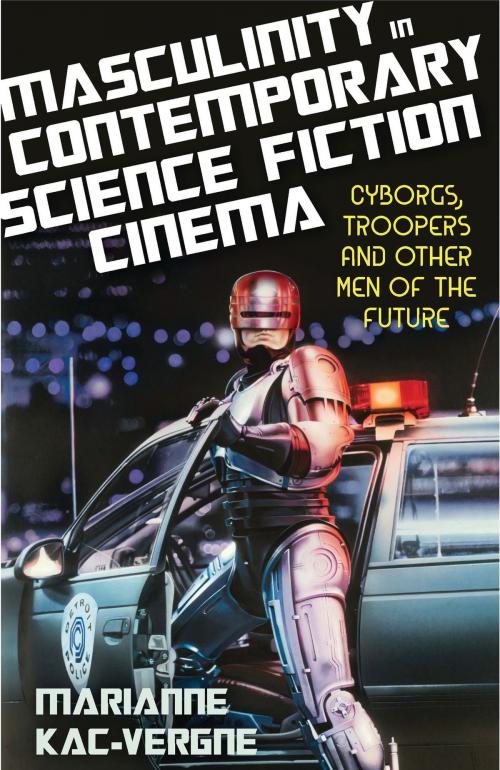Masculinity in Contemporary Science Fiction Cinema
Cyborgs, Troopers and Other Men of the Future
Nonfiction, Entertainment, Film, History & Criticism, Performing Arts, Social & Cultural Studies, Social Science| Author: | Marianne Kac-Vergne | ISBN: | 9781786723154 |
| Publisher: | Bloomsbury Publishing | Publication: | December 14, 2017 |
| Imprint: | I.B. Tauris | Language: | English |
| Author: | Marianne Kac-Vergne |
| ISBN: | 9781786723154 |
| Publisher: | Bloomsbury Publishing |
| Publication: | December 14, 2017 |
| Imprint: | I.B. Tauris |
| Language: | English |
If science fiction stages the battle between humans and non-humans, whether alien or machine, who is elected to fight for us? In the classics of science fiction cinema, humanity is nearly always represented by a male, and until recently, a white male.
Spanning landmark American films from Blade Runner to Avatar, this major new study offers the first ever analysis of masculinity in science fiction cinema. It uncovers the evolution of masculine heroes from the 1980s until the present day, and the roles played by their feminine counterparts. Considering gender alongside racial and class politics, Masculinity in Contemporary Science Fiction Cinema also brilliantly situates filmic examples within the broader culture.
In view of its largely young male audience, what masculine norms and models of behaviour are promoted by science fiction films? During the 1980s, the genre helped to redefine white masculinity in America as both powerful and victimised. Heroes embodied Reagan-era hypermasculinity, but owed their resolve to earlier traumas inflicted by greedy and technology-obsessed elites, a critique of the decade's materialism. By the 1990s, the emotional terrain available to male characters was expanded, even witnessing the humanisation of the Terminator, and black characters entered the stage. At the same time, the world of science fiction became increasingly sanitised, moving away from the dystopias of the 1980s. Can science fiction call into question the privileged position of whiteness as the invisible and universal norm for the whole of humanity?
In many ways, science fiction challenges the status quo, offering an imaginary space where identities are renegotiated. Working-class heroes fight corrupt corporations (Escape from New York or RoboCop), powerful heroines battle for survival (Alien), and cyborgs morph from one sex to another (Terminator 2). Considering these alternative visions, the book highlights the tensions inherent to science fiction as a genre. It is indispensable for understanding science fiction and its role in contemporary cultural politics.
If science fiction stages the battle between humans and non-humans, whether alien or machine, who is elected to fight for us? In the classics of science fiction cinema, humanity is nearly always represented by a male, and until recently, a white male.
Spanning landmark American films from Blade Runner to Avatar, this major new study offers the first ever analysis of masculinity in science fiction cinema. It uncovers the evolution of masculine heroes from the 1980s until the present day, and the roles played by their feminine counterparts. Considering gender alongside racial and class politics, Masculinity in Contemporary Science Fiction Cinema also brilliantly situates filmic examples within the broader culture.
In view of its largely young male audience, what masculine norms and models of behaviour are promoted by science fiction films? During the 1980s, the genre helped to redefine white masculinity in America as both powerful and victimised. Heroes embodied Reagan-era hypermasculinity, but owed their resolve to earlier traumas inflicted by greedy and technology-obsessed elites, a critique of the decade's materialism. By the 1990s, the emotional terrain available to male characters was expanded, even witnessing the humanisation of the Terminator, and black characters entered the stage. At the same time, the world of science fiction became increasingly sanitised, moving away from the dystopias of the 1980s. Can science fiction call into question the privileged position of whiteness as the invisible and universal norm for the whole of humanity?
In many ways, science fiction challenges the status quo, offering an imaginary space where identities are renegotiated. Working-class heroes fight corrupt corporations (Escape from New York or RoboCop), powerful heroines battle for survival (Alien), and cyborgs morph from one sex to another (Terminator 2). Considering these alternative visions, the book highlights the tensions inherent to science fiction as a genre. It is indispensable for understanding science fiction and its role in contemporary cultural politics.















